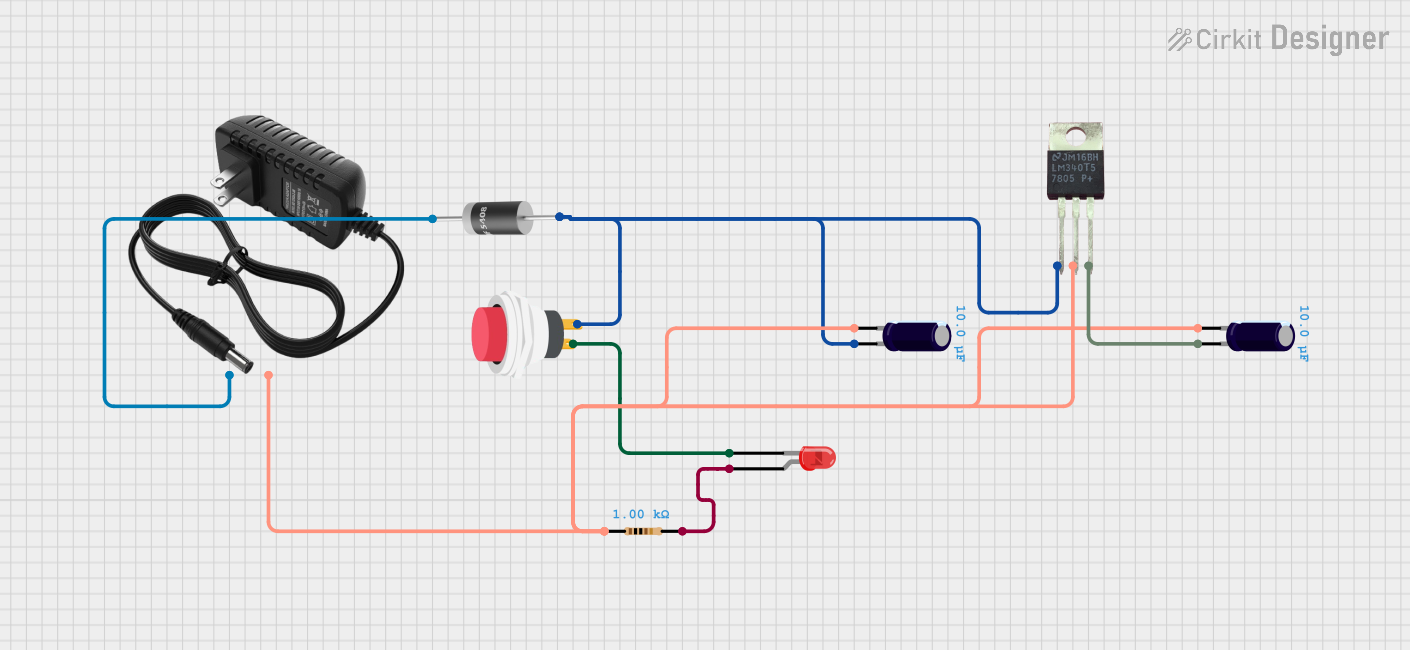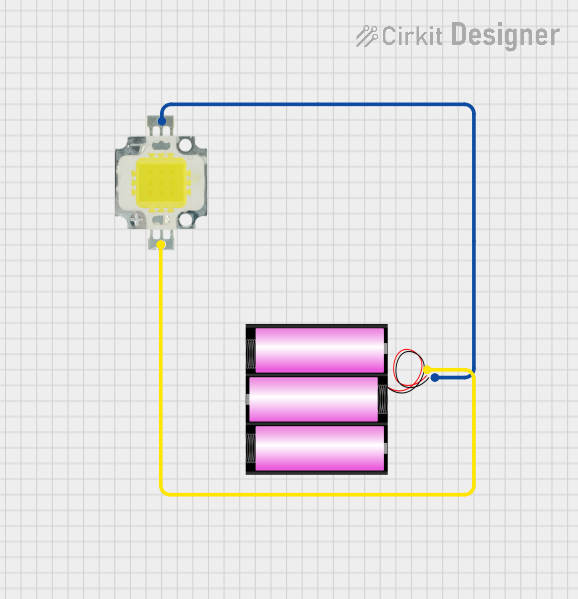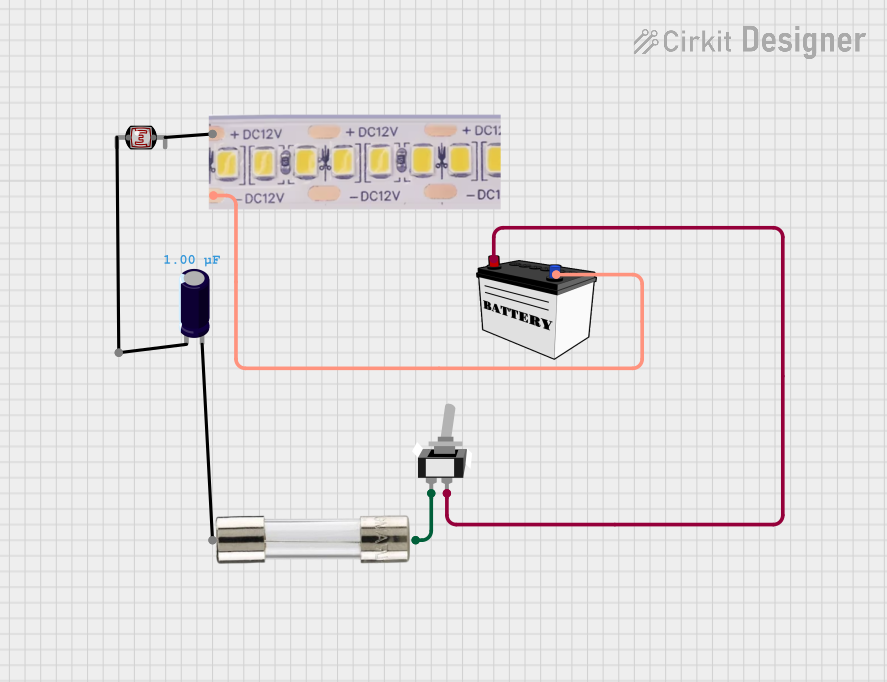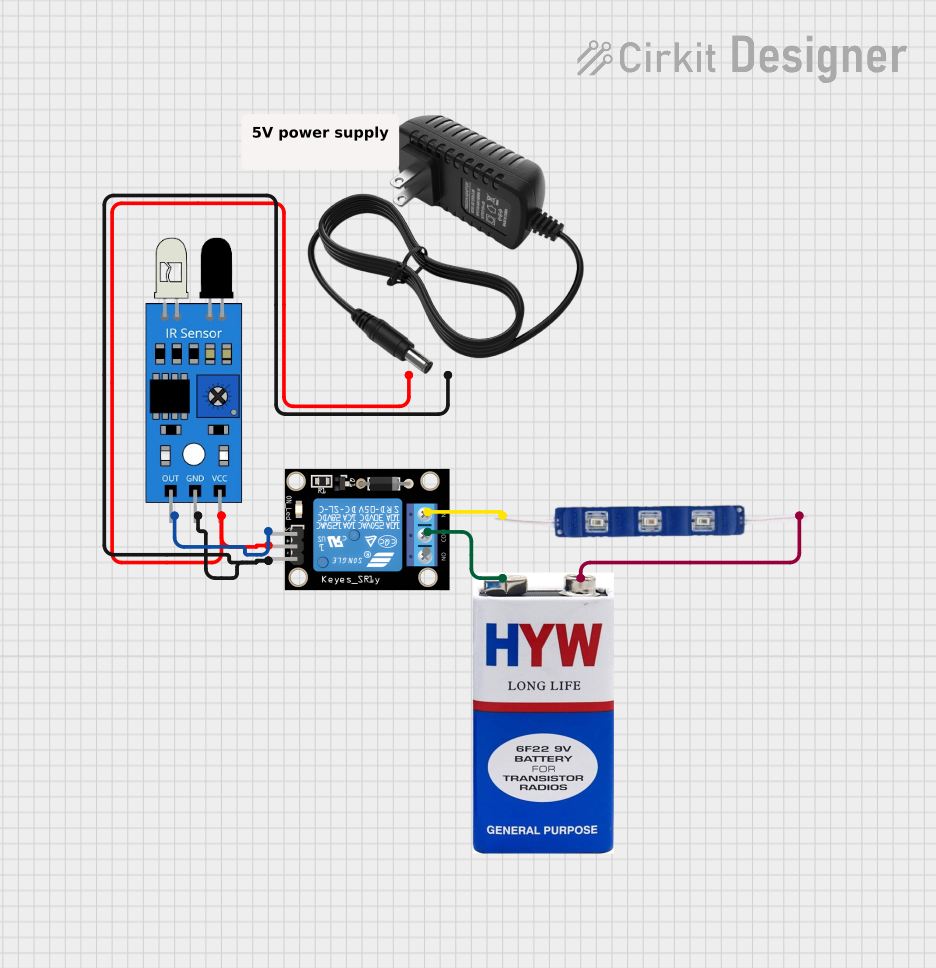
How to Use Lampu LED Biru 12V: Examples, Pinouts, and Specs

 Design with Lampu LED Biru 12V in Cirkit Designer
Design with Lampu LED Biru 12V in Cirkit DesignerIntroduction
The Lampu LED Biru 12V is a blue LED lamp designed to operate at a 12V DC input. It provides bright illumination with minimal power consumption, making it an energy-efficient choice for various applications. This LED is commonly used in decorative lighting, automotive indicators, signage, and other projects requiring vibrant blue light.
Explore Projects Built with Lampu LED Biru 12V

 Open Project in Cirkit Designer
Open Project in Cirkit Designer
 Open Project in Cirkit Designer
Open Project in Cirkit Designer
 Open Project in Cirkit Designer
Open Project in Cirkit Designer
 Open Project in Cirkit Designer
Open Project in Cirkit DesignerExplore Projects Built with Lampu LED Biru 12V

 Open Project in Cirkit Designer
Open Project in Cirkit Designer
 Open Project in Cirkit Designer
Open Project in Cirkit Designer
 Open Project in Cirkit Designer
Open Project in Cirkit Designer
 Open Project in Cirkit Designer
Open Project in Cirkit DesignerTechnical Specifications
- Operating Voltage: 12V DC
- Current Consumption: Typically 20mA to 30mA
- Power Consumption: Approximately 0.24W to 0.36W
- Light Color: Blue
- Luminous Intensity: ~1000-2000 mcd (varies by model)
- Viewing Angle: ~30° to 60° (varies by model)
- Polarity: Anode (+) and Cathode (-)
- Lifespan: ~50,000 hours under optimal conditions
Pin Configuration and Descriptions
The Lampu LED Biru 12V typically has two pins for connection:
| Pin Name | Description | Notes |
|---|---|---|
| Anode (+) | Positive terminal | Connect to the 12V DC supply. |
| Cathode (-) | Negative terminal (ground) | Connect to the ground (GND). |
Usage Instructions
How to Use the Lampu LED Biru 12V in a Circuit
- Power Supply: Ensure you have a stable 12V DC power source. The LED is designed to operate at this voltage without requiring an external current-limiting resistor, as it is typically built with an internal resistor.
- Polarity: Connect the Anode (+) pin to the positive terminal of the power supply and the Cathode (-) pin to the ground (GND).
- Wiring: Use appropriate wires to connect the LED to your circuit. Ensure the connections are secure to avoid flickering or damage.
- Testing: Once connected, power on the circuit to verify that the LED illuminates with a bright blue light.
Important Considerations and Best Practices
- Voltage Tolerance: Do not exceed the 12V operating voltage, as this may damage the LED.
- Heat Management: While the LED generates minimal heat, ensure proper ventilation if used in enclosed spaces.
- Polarity Check: Always double-check the polarity before powering the circuit. Reversing the polarity may damage the LED.
- Series Connection: If using multiple LEDs in series, ensure the total voltage matches the sum of the individual LED voltages.
Example: Connecting to an Arduino UNO
The Lampu LED Biru 12V can be controlled using an Arduino UNO with a relay or transistor circuit, as the Arduino's GPIO pins cannot directly supply 12V. Below is an example using an NPN transistor (e.g., 2N2222) to control the LED:
// Example: Controlling a 12V Blue LED with Arduino UNO and NPN Transistor
const int ledControlPin = 9; // Arduino pin connected to the transistor base
void setup() {
pinMode(ledControlPin, OUTPUT); // Set the control pin as an output
}
void loop() {
digitalWrite(ledControlPin, HIGH); // Turn on the LED
delay(1000); // Keep the LED on for 1 second
digitalWrite(ledControlPin, LOW); // Turn off the LED
delay(1000); // Keep the LED off for 1 second
}
Circuit Notes:
- Connect the Arduino's
ledControlPin(e.g., pin 9) to the base of the NPN transistor through a 1kΩ resistor. - Connect the LED's Anode (+) to the 12V power supply and the Cathode (-) to the transistor's collector.
- Connect the transistor's emitter to the ground (GND).
- Ensure the 12V power supply shares a common ground with the Arduino.
Troubleshooting and FAQs
Common Issues and Solutions
LED Does Not Light Up:
Cause: Incorrect polarity.
Solution: Verify that the Anode (+) is connected to the positive terminal and the Cathode (-) to the ground.
Cause: Insufficient voltage.
Solution: Ensure the power supply provides a stable 12V DC.
LED Flickers:
Cause: Loose connections.
Solution: Check all wiring and ensure secure connections.
Cause: Power supply instability.
Solution: Use a regulated 12V DC power source.
LED Overheats:
- Cause: Prolonged use in an enclosed space.
- Solution: Improve ventilation or reduce usage duration.
LED Burns Out:
- Cause: Overvoltage.
- Solution: Ensure the input voltage does not exceed 12V.
FAQs
Q: Can I use this LED with a 9V battery?
- A: No, the LED is designed for 12V operation. Using a lower voltage may result in dim or no illumination.
Q: Can I connect multiple LEDs in parallel?
- A: Yes, but ensure each LED receives 12V and the power supply can handle the total current draw.
Q: Is a current-limiting resistor required?
- A: No, the Lampu LED Biru 12V typically includes an internal resistor for current regulation.
Q: Can I dim the LED?
- A: Yes, you can use a PWM (Pulse Width Modulation) signal with a transistor or a dedicated LED dimmer circuit.
By following this documentation, you can effectively use the Lampu LED Biru 12V in your projects and troubleshoot common issues with ease.